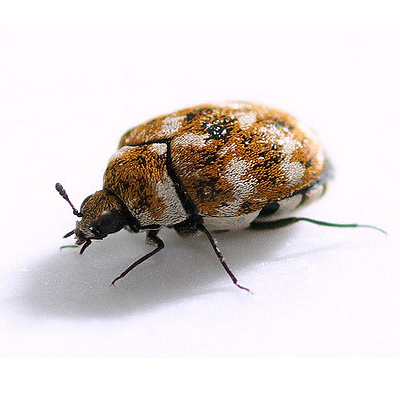
CARPET BEETLE DESCRIPTION
Adult Carpet Beetles are 1/16 to 1/8 of an inch long, round or oval in shape, and can be either plain black or covered with a mottling of yellow, white, and black scales. The larvae are approximately 1/4 of an inch long, rather stubby looking, and clothed with bands of stiff, erect, brown hairs. The body is wide in the middle but tapers at the end where you’ll find a thick tuft of hair.
Biology
This insect is found all over the world and gets its name from its habit of feeding on the hair, padding, feathers, or woollen upholstery of furniture. These insects also can feed on a wide variety of materials, including wool, hair, fur, feathers, bristles, and dried blood, glue, and book bindings. They can damage linen, cotton, jute, softwood, and leather when these items are soiled. The adult females lay about 60 eggs in areas where the larvae are able to feed. The eggs hatch in 9 to 15 days and the larvae develop from 70 to 90 days before pupating in their last larval skin. The adults emerge from the pupal skin in 14 to 17 days and may live for another 60 days.
Control Methods
Successful control of carpet beetles begins with a thorough inspection to find the source of the infestation. These insects are usually first noticed when adults are found. The larval infestation can be just about anywhere, therefore, stored clothing, carpeting – especially in non-traffic areas – stored food, and other possible larval development sites should all be examined. Infested materials should be thoroughly cleaned or discarded. A residual insecticide should be carefully applied to cracks, crevices, and along baseboards and the home should be vacuumed carefully with special attention given to the areas along baseboards and under furniture.
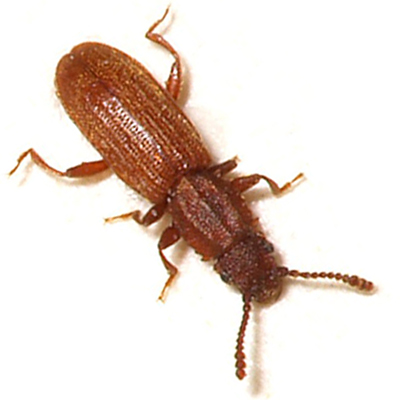
SAW-TOOTHED GRAIN BEETLE DESCRIPTION
Small, slender, dark brown insects about 1/8” long. Six saw-like “teeth” are found on either side of their pronotum (segment behind the head). Larvae are yellow-white and about 1/8 inch long. They have three pairs of legs and a pair of false legs on the abdomen.
Biology
Females deposit 45-285 white eggs over a four to five-month period in the cracks or crevices in the food they are infesting. They molt 2-4 times and their life cycle (egg to adult) usually requires 30-50 days. There can be 6-7 generations per year. Adults usually live 6-10 months but can live up to 3 years.
HABITS
Feed on stored products such as flour, bread, cereal, macaroni, dried fruit, nuts, dried meat, sugar, dog food, biscuits etc. Adults are not known to fly and are not attracted to light.
Control Methods
• Find, remove and destroy all infested materials.
• Vacuum entire storage area thoroughly to remove food materials from cracks and crevices.
• Infested stored products can be sterilized with heat (52oC for one hour) or cold (-20oC for 24 hours).
• Treat cracks, crevices etc. with residual insecticide sprays or dusts.
• Heavily infested materials may need to be fumigated to achieve control.
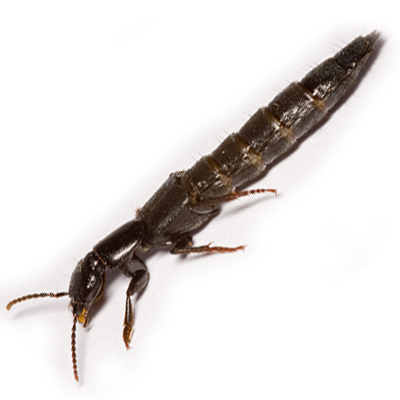
ROVE BEETLE DESCRIPTION
Rove beetles are fast moving, long, narrow-bodied beetles, with short elytra and visible abdomens which are often hairy. They look somewhat like an earwig without the pincers. They can be up to ¾” long and are normally found in the ground, under leaf litter and stones, as well as in ant nests. These insects attack other insects such as aphids and ants, grubs, and root maggots in the soil. Rove beetles are unusual in that their elytra are short and do not cover the entire abdomen. Because of this, they are able to fold their long wings intricately under these short elytra but surprisingly can fly quite well.
Control Methods
For control outdoors, you can use a product containing permethrin or others registered to control beetles, but normally they do not cause a problem and are considered a rarely noticed friend. If they do end up indoors, simple removal by way of a vacuum will work as there normally are only one or two. If an infestation does occur, the use of a residual insecticide along all baseboards, cracks, and crevices will take care of this problem.
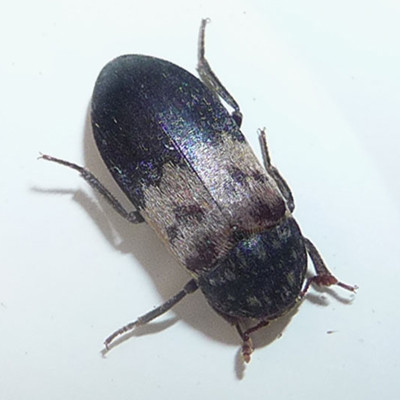
LARDER BEETLE DESCRIPTION
Larder beetles are ¼ to 3/8” long, elongated oval in shape, and dark brown to black in colour with distinct, clubbed antennae. The upper 1/3 of the wing covers are covered with a wide, yellow band with six to eight dark spots on it. The underside of the body is covered with fine yellow hairs. The larvae are 3/8 to 5/8” long, brown and very hairy. They have two backward, curved, sharp spines next to the last abdominal segment.
Identification
During her lifetime, the female lays about 100 eggs on food and into cracks and crevices. Eggs hatch in 12 days and the larvae bore into the food material they are infesting. The male larvae molt five times and the females molt six times before they pupate. The larvae leave the food material and wander just before the last molt and often bore into wood or other similar materials to pupate. The life cycle, egg to adult, requires 40 to 50 days.
HABITS
Adult larder beetles overwinter in cracks or crevices in outdoor locations and enter buildings in spring and early summer. These insects prefer to infest meats such as ham, bacon, dried beef and fish, as well as cheese, feathers, horns, skins, dry pet foods, hair and museum pieces. In homes, these beetles may be found infesting accumulations of dead cluster flies or dried rodent carcasses. Most of their damage is done by the larvae; however, the adults also feed. The adults avoid light during mating and egg-laying periods.
Control Methods
Larder beetles are not as common as they once were because few people now cure meat in their homes. When these insects do appear, the homeowner usually finds the adult beetles or the wandering larvae. Control begins with a thorough inspection to discover the source of the infestation. The customer should be questioned about previous rodent, bird, and fly infestations. Locating the source(s) of the infestation might be difficult because larder beetles are often in a wall void or attic where dead insects, birds, or rodents provide a food source for the larvae. Whenever possible, the source of the infestation should be removed. Thorough sanitation in meat packing plants or factories that handle hides, feathers, or other suitable breeding materials is absolutely essential to prevent larder beetle infestations. Residual insecticide sprays or dusts can be applied into cracks and crevices or voids that appear to be sources of these insects.
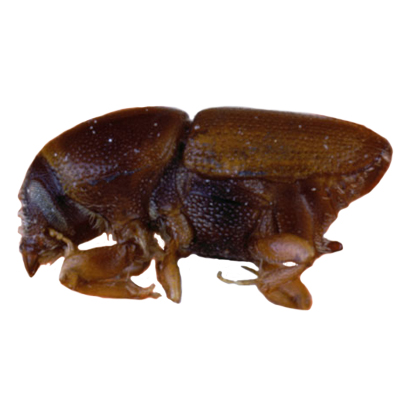
ELMBARK BEETLE DESCRIPTION
Adults are brownish-black in colour. They measure approximately 1/8″ (2–3.5 mm.), with the long body covered with short, stiff, yellow hairs. The wings are deeply pitted. These pests are especially bad as they can transmit Dutch Elm Disease.
Identification
The eggs are laid in bark wounds found on elm trunks, and the larvae burrow down to the cambium layer, which may cause girdling of the tree. Elm Bark Beetles are most likely to attack trees that have been weakened by drought, insects, and disease. A good maintenance program will greatly reduce the chances of infestation. This program includes keeping trees watered and organically fertilized. Trees have heavy nitrogen needs, so use a high-nitrogen fertilizer such as blood meal or cottonseed meal. Prune dead, dying, or injured branches before April 1st or after July 31st.
Dutch Elm Disease control is a community problem. The wider the area over which controls are carried out, the better the results will be. Once an elm tree is infected with the disease, it never recovers. Therefore, as soon as infection is discovered, control methods must be promptly applied to keep the disease from spreading in a community. It is imperative to completely destroy all debris from diseased elms. A town in Massachusetts dumped its diseased elms in a river only to have the beetles survive the dunking and infect a community downstream.
The danger of infestation is less common for young, vigorous trees than for older specimens. The most noticeable symptom of Dutch Elm Disease is the wilting and yellowing of one or more branches of infected trees.
Control Methods
Insecticides will not render elms safe from Dutch Elm Disease, only slow the process. Basal spraying can be applied to the bottom 50 cm of affected trees with a product registered for eradicating the beetles, or the trees can be injected with a systemic fungicide. The chemical is injected into small holes drilled in the trunk and is carried upward to the crown by the flow of the sap.
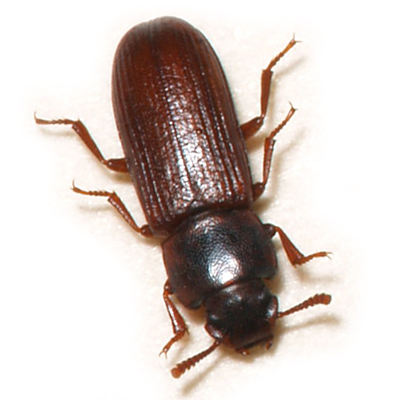
FLOUR BEETLE
Identification
PHYSICAL DEVELOPMENT
• Most eggs hatch within 3-4 weeks
• Breeding Season – throughout the year
• Flour beetles usually come into a house from infested dried goods
Prevention
STEPS USUALLY REQUIRED IN ANY CRAWLING INSECT CONTROL PROGRAM
• Take out garbage daily
• Clean up all food
• Keep dried goods in sealed containers
• Some believe that an aerosol spray will effectively kill the insects – but it will not, as it only kills on contact, a residual spray should be used
• Flour beetles usually will only be found in the kitchen, so it should only be necessary to treat that area
Control Methods
USING A RESIDUAL SPRAY
• Apply spray to all baseboards, cracks and crevices
• Spray will kill on contact and will stay effective for up to six weeks, depending on the spray
• Everyone, including animals, must stay out of the premises for at least 4 hours
• If applying to kitchen cupboards, it is recommended to cover the shelves with lining to protect their items from the chemical. You can thoroughly wash out the cupboards either before spray is applied or after two months when the spray is no longer effective.
• Spray may stain carpet and other materials – a test spot should always be done first
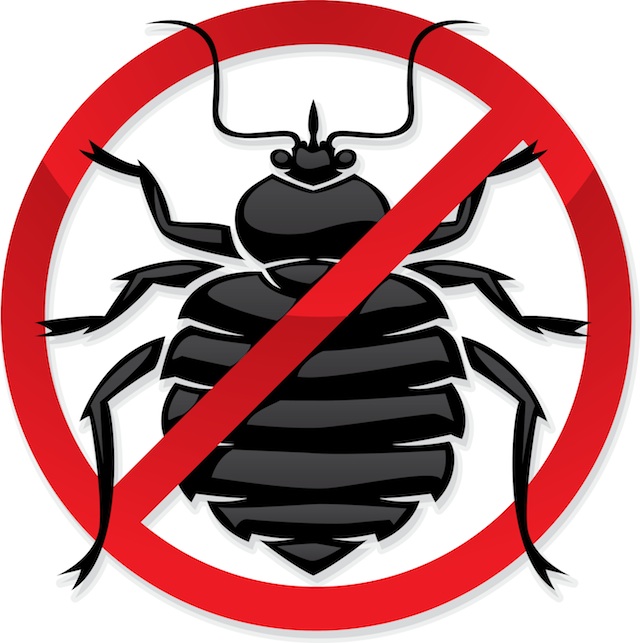
Test Your Knowledge: Bed Bug Quiz
We created this Bed Bug quiz for you to test your knowledge! Can you beat the Bed Bugs? Check your answers with the answer key posted below. Adult bed bugs are:1/4 – 1/3 inch long (6.35 – 8.4 mm)3/16 inch long (4.762 mm)1/2 inch long (12.7 mm) Bed bugs have ____ – segmented antennae2345 Egg…

Bed Bugs in Hotels
Bed bugs are a worldwide epidemic and anyone can carry bed bugs into a hotel. Bed bugs do not discriminate and can be easily brought in to your hotel. Employees should not panic if a customer approaches them with a bed bug. Always stay calm when talking to a guest. Calmly get the sample or…
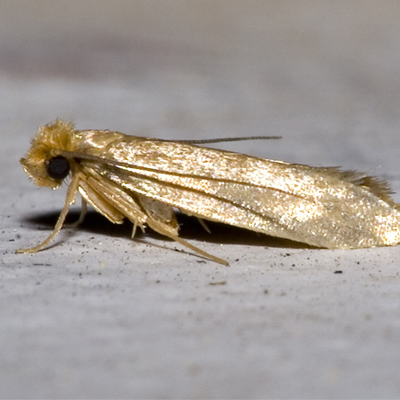
Test Your Knowledge: Stored Product Pests True or False
We created this fun quiz so that you can test your knowledge on Stored Product Pests! Take the “Stored Product Pests True or False Quiz” below and compare your answers to the answer key at the bottom of this post. Good luck! It has been estimated that stored product pests damage about 10% of the…
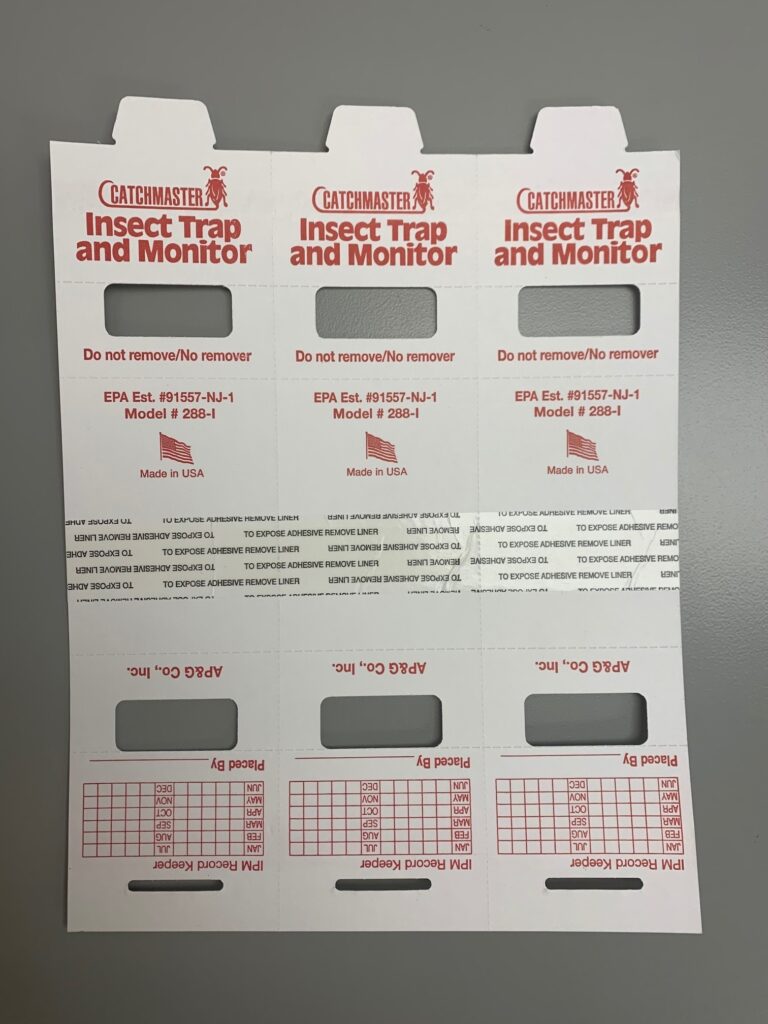
Not All Traps Are Created Equal
Trap selection is an important component of any trapping and monitoring program within an integrated pest management program. Improper selection of a trap style can lead to misrepresentation of a true pest numbers in an area. This is due to the fact that pests may: Not be able to enter a trap to be captured…

